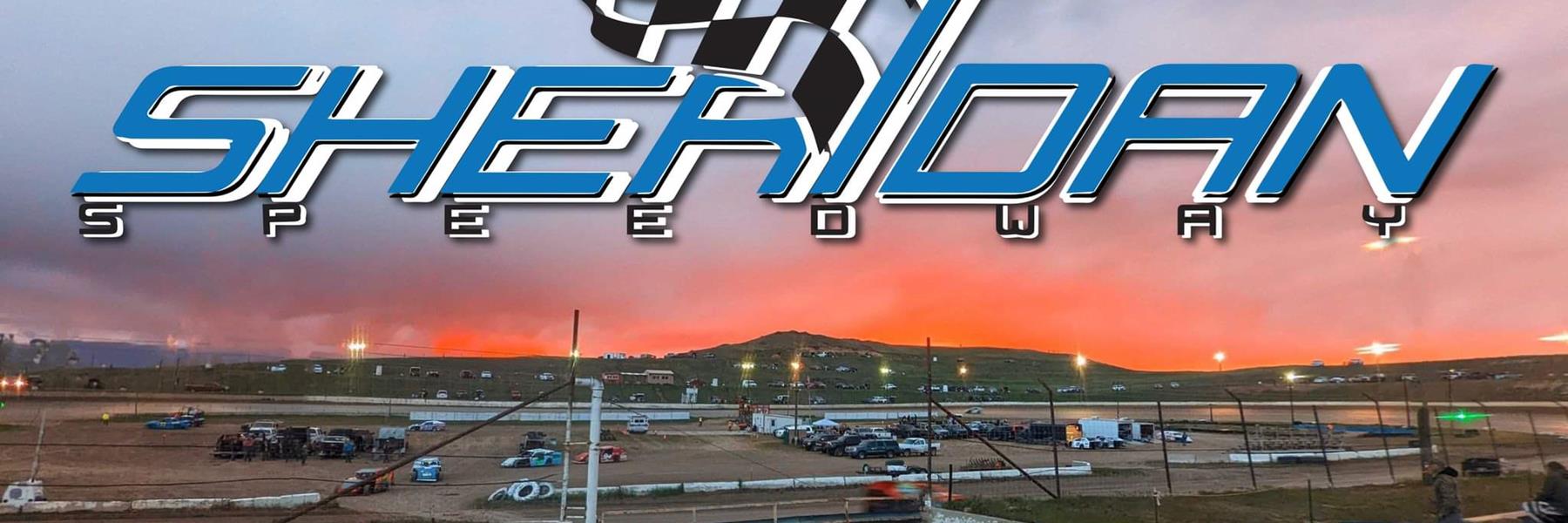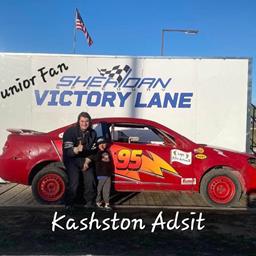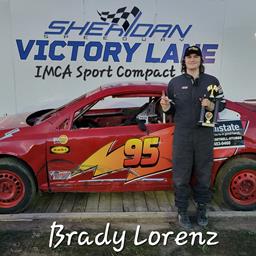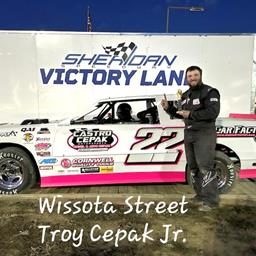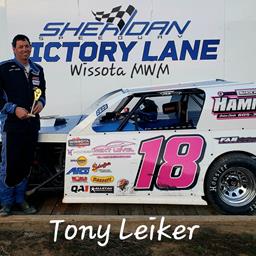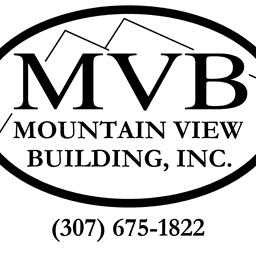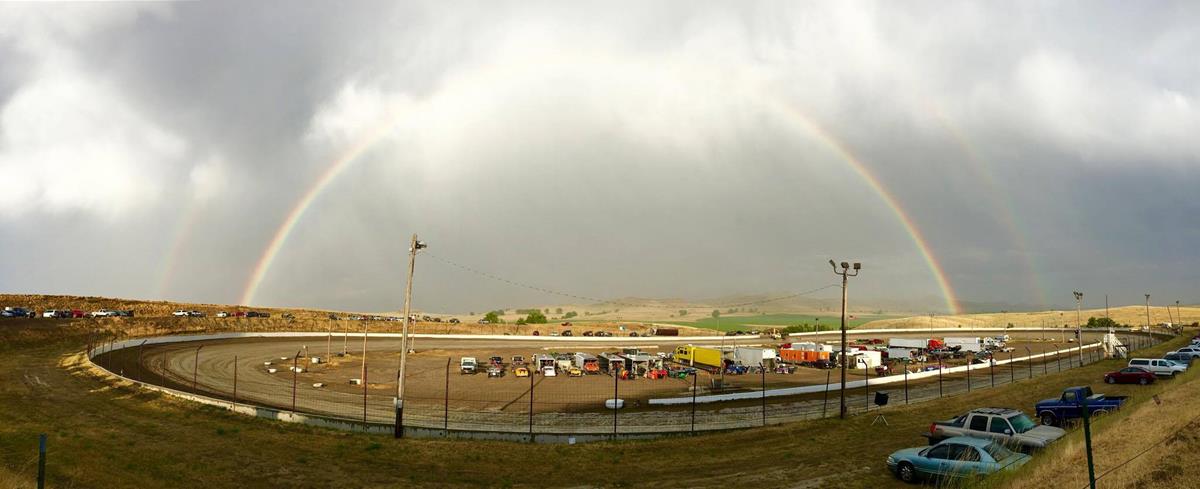
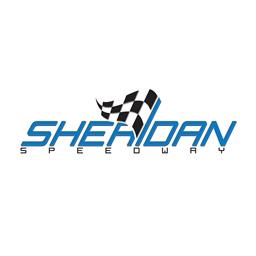
1/1/2023
Sheridan Speedway
Sheridan Motorsports Assoc. Quarter Midget Rules
Sheridan Motorsports Association Quarter Midget Dirt Racing
Car rules, Safety information, Track information
Car Specifications & Safety Equipment
All specifications apply to all Quarter Midget classes unless otherwise specified.
Sheridan Motorsports Association /Sheridan Speedway Honda 120 Quarter Midget Requirements
All youth 5 yrs-13 yrs. drivers must have (Insurance required) Parental Release - Signed & Notarized prior to any operation of any & all motorized vehicles at Sheridan Speedway. ALL Sheridan Speedway General Track and Pit Rules apply. Youth age divisions will be 5 years old - 9 years old & 10 years old – 14 years old. Both Classes will run in the Honda 120 engine division.
All quarter Midget Drivers will pay a Driver Fee of $15.00 and all Adults entering the pits will pay a $15.00 pit fee. All Youth (age1-12) entering the pits will pay a $10.00 pit fee.
All drivers must have & use a RACEceiver (Speedway Motors part number 910W16001) during any operation of their race vehicle.
At no time is any two-way radio allowed to be used -- Example: NO communication between driver and pit crew, car handler, parents, etc.
It is the full responsibility of the driver/car handler to fully understand the safety & race track procedures. There will be standard use of all flags and flag man. Flag man is in full control of each race and race participant.
Green Flag: Signals the start of the race.
Yellow Flag: Proceed with heightened caution.
Blue Flag: "There's a race, you're not in it" is the common mantra of the recipient of this flag. The rider is often being lapped by the leaders, and should be mindful and respect them. Failure to heed the Blue Flag could result in being "Black Flagged."
Black Flag: There is a problem with the vehicle (smoking, losing parts, etc.) or maybe the rider forgot to strap their helmet. Behavioral problems, like crashing into someone can lead to being "Black Flagged"
Red Flag: The red flag signals that there is a significant problem on the track, and the race needs to stop.
White and Checkered Rolled and Crossed: Race is halfway complete.
White Flag: One lap remaining.
Checkered Flag: Race is over.At NO time is anyone allowed on the track that is not a designated track official.
It will be within full rights of Sheridan Speedway to not allow or allow a car/driver to participate in an event.
There will be a zero tolerance for any bad behavior from the driver, car handler, pit crew, parents etc.
A maximum of 2 cautions per driver will be allowed, at this time it will be flagman’s discretion to allow or disallow for the driver to continue.
The heat race will be 15 laps or a timed total of 10 minutes, the feature race will be 15 laps or a timed total of 20 minutes.
The heat race lineups will be set on a draw, each driver will draw a number prior to each race, a minimum of 5 cars per heat, depending on total entries age groups could be combined. Feature lineups will be set on finishing positions from the heat races, top 6 cars will be inverted and started accordingly.
Sheridan Speedway Reserves the right to adapt and or change any rule for the safety and
efficiency of any race or individual.
Sec. 1 DIMENSION’S
- Height: Quarter Midgets: ........................ 50” maximum, including roll cage
- Length: (Measurements include the bumpers) Quarter Midgets: 84” maximum Half Midgets: 76” minimum, 88” maximum
- Tire Size: Front Maximum 11” diameter Rear maximum 12 1/2” diameter.f As branded by the manufacturer. Dirt Track Tires allowed
- Weight: Quarter Midgets: Minimum 160 lbs. Half Midgets: Minimum 170 lbs.
- Wheelbase: (Measured center to center of axle. Both sides must be within specifications.) Quarter Midgets: 42” minimum, 56” maximum Half Midgets: 48” minimum, 56” maximum
- Wheel Tread: (Measured center to center of tires.) Quarter Midgets: 28” minimum, 34”
maximum Half Midgets: 28” minimum, 36” maximum
Sec. 2 CAR CONSTRUCTION
- Axle
a. Axle, axle hubs, or axle nuts may not extend beyond the outer edge of the wheel rim.
b. All rear axles will be made out of aluminum, titanium or steel only. - Battery
a. All wet-cell batteries, which are mounted in the cockpit area must be enclosed and vented out of the cockpit area.
b. All batteries must be securely mounted to prevent loss during operation.
c. Battery and electronic ignition equipment not allowed on or in cars in the Honda and Briggs classes. - Belly Pan
a. The pan must extend from the front axle to the firewall.
b. The ground clearance shall not exceed 3.5”.
c. The belly pan must be constructed in such a manner as to comply Sec. 2, Rule 13B.
d. Aluminum: minimum thickness 0.040” - Steel: minimum thickness 0.025”
- No open holes in the belly pan.
- Body Section
a. All cars must have a body which completely covers the driver’s legs, a tail section, and a housing which covers the engine. The tail section can be the engine housing.
b. The body and tail section will not have any sharp edges.
c. Round the edges of the body and tail section inward, not outward for extra protection.
d. There will be no sharp corners – such as square corners. Make all corners and edges rounded in shape so as not to cut - if in an accident.
e. The majority of the bottom of the tail cone shall be no higher than the top of the bumper when normally installed. Access holes are allowed.
f. If the belly pan or the body does not enclose the front end it must be enclosed by using heavy screening or metal sheeting meeting the following specifications. - Screening Minimum material: Metal wire
Minimum material dimension: 0.048”
Maximum mesh dimension: 1/2” spacing - Metal sheeting
Minimum material thickness: 0.048”
Maximum hole diameter: 1/2” (if perforated)
g. There will be no fenders, spoilers or air deflectors on roll cage, body, engine housing or tail section.
h. Any radical changes in body, tail section, or side panels must be submitted for approval to the SMA Technical Director and SMA Safety director.
i. All cars must have side panels on both sides of the cockpit and engine compartment. There must be a 2” min. diameter hole in the right side to access the flywheel for seal painting the nut.
j. Maximum height of the body is 28 inches as measured from the bottom of the lower frame rail (hood and tail cone).
k. The side panel must extend a minimum of 6”, to a maximum of 22” in height, as measured from bottom of lower frame rail. Side panels will include everything from front bumper to rear bumper.
i. Sail Panels on either side of the cockpit may extend to top of the roll cage and may not extend forward past a cross plane established by the seat back. They must be supported on all edges by steel frame members.
m. Visors are permitted, 3” max height measure from the bottom of the front halo cage bar and must remain between uprights and attached securely (recommended Dzus buttons or zip ties). 7” max overall length. - Brake
a. Brake to be activated by a foot pedal.
b. A minimum of one wheel brake is required, located on the rear axle, sufficient to lock the drive wheel(s).
c. No plastic brake lines allowed. - Bumpers
a. All cars must have front and rear bumpers.
b. All cars must have double bumpers with two connecting tubes welded in place.
c. All bumpers (front and rear) may not extend beyond the side of the main lower or upper frame rails. The main frame rails must be straight from front to the back of the car. And the bumper must hook inside the main frame rails. No bumper parts past the outer edge of the main frame rails. No addition of material in front of or behind the main bumper hoop. Example - no gussets, no extra bars for reinforcement or anything extra on the bumper.
d. Any design that does not meet this spec, must be approved by the track tech and track safety director.
e. The bumper tubes (front and rear) shall be mounted over each other with a maximum of 15 degrees rake as measured from the vertical. They shall have at least two inches radius bend on the ends and be mounted to the frame of the car in order to prevent hooking or lifting. 1st Offense: Warning (48 hours to fix), 2nd offense DQ from class.
f. The tubes should be no closer than two inches apart.
g. The bumpers will be strong enough to be used by the handler to lift the car, must be fastened with 2 bolts, one on each side, and must be approved by the track and safety directors.
h. Bumpers will be of tubular metal construction. Titanium and/or composite materials shall not be used.
i. Front and Rear bumpers to be bolted and bolts must be 6/32 to max 10/32 grade 5 or better. Minimum tubing wall thickness of 0.049” - Drive
a. Drive must be direct, no clutches allowed.
b. Drive may be either direct or clutched. - Drive Chain
a. Chains and sprockets must not be exposed to the driver or handler while race car is in motion. - Drive Wheel
a. All cars must run right rear drive/left wheel is optional. - Engine
a. All Sheridan Speedway Quarter Midgets will run the Novice Honda 120 Class for a minimum of 1 full year.
Engine Housing 11.
a. All cars are required to have a catch can if the engine is vented. All breathers, engine vents and catch cans are to be placed under the engine housing or tail section. (In case of an accident, this would help prevent oil from flowing onto the driver.)
b. The frame cannot be used as a catch can.
c. Carburetors are to be completely within the engine housing covered in such a way as not to protrude.
d. Due to today’s smaller tail section, the carburetor may have to be covered with a bubble or scoop, securely attached to the tail section. The bubble or scoop must either be completely closed or rear-facing so as to not capture air. - Exhaust System
a. The exhaust system must extend outside of the engine compartment.
b. Any exposed portions of the exhaust system shall not be higher than the rear tire.
c. No portion of the exhaust system may extend outside of a straight edge extending from the rear edge of the rear tire and the extreme rear of the rear bumper, must be intact at the scales.
d. Forward exhaust pipe (including mufflers) shall not extend outside of the nerf bar.
e. Honda 120 classes must utilize a tailpipe and muffler conforming to specifications published in the appropriate tech manuals. You cannot cut off the threaded inlet if it is to be used in a Honda. Muffler rule: hand tight, turn back out, anything more than 1/2 turn - DQ.
f. All quarter midgets, if any part of the exhaust system comes off during any race, the car may be brought in under yellow for repair. But must be repaired with no leaks by the fall of checker flag, If not repaired properly, this will be a DQ at the scales.
g. All quarter midgets and half midgets, all exhaust must pass thru the muffler, any exhaust that is tampered with will result in a 30day suspension.
h. It’s recommended that all exhaust pipes are wrapped with "header wrap" or "heat sleeves." For example - Thermo Tech, Long Acre and/or DEI. - Firewall
a. A metal firewall is required between the driver and the fuel tank.
b. The firewall and belly pan must be constructed so as to prevent fuel from entering the cockpit.
c. Allowable materials for firewalls are listed below: - Aluminum: Minimum thickness: 0.048”
- Steel: Minimum thickness: 0.025”
d. No open holes in firewall. No "duct" tape. The hole must be filled with pop rivet or bolt to prevent of any "melting of duct tape." - Frame
The frame for any new cars built after 3/1/2000 must be manufactured from SAE 4130. Effective 1/1/2009 all cars in SMA must be manufactured from seamless, cold-drawn, SAE 4130, Chrome Moly (chromium molybdenum) tubing, extending forward from the top of the roll cage to approximately the front bumper (down-tube design). - Fuel
Honda 120. Gasoline, automotive type only; no white or aviation, no additives. 1 - Fuel Lines
a. All fuel fittings must be automotive type. Fuel linings must be attached with any positive stop clamps.
b. All fuel lines must be automotive grade or steel braided, flexible, fire resistant/fireproof hose and should be rated for the appropriate fuel (gasoline/methanol). Steel braided hose or lines made with a fire-resistant cover will be allowed.
c. A fireproof sleeve may also be used over the fuel line - from the fuel valve fitting to the carburetor inlet. FOR ALL CARS. This must be a sleeve design made of one piece (not a wrap), that the fuel line will slide through. This sleeve must also fit the Outside Diameter of the fuel line.
d. No cool cans or other device for cooling the fuel. No device used to reduce the temperature or remove energy from the fuel system, including dry ice in the fuel tank. - Fuel Filters
Fuel filters must be of a metallic type of material. Aluminum or Steel only. No glass or plastic filters allowed. The filter may NOT exceed 1.5 inches in diameter and 3.0 inches in length. - Fuel Tanks
a. All fuel tanks must be vented below the belly pan. (The tank lid hole must be plugged)
b. No pressurized tanks.
c. All fuel tanks must be securely mounted to the frame as not to move inside the tail section. If hose clamps are used minimum of two.
d. Only Aluminum fuel tanks are permitted. Minimum wall thickness of 0.050”. No coatings or anodized exterior finishes are allowed on fuel tanks.
e. If the fuel cap comes off on the racing surface for any reason, it is an automatic DQ. 18. (F) Fuel tanks cannot be replaced during a race; penalty is DQ from that race.
f. Only one fuel tank may be used.
g. Maximum fuel tank size 140 ounces. - Fuel Pumps
Honda 120. No fuel pumps of any type allowed. - Nerf Bars
a. All cars must be equipped with nerf bars (side bumpers) at the front of the rear tire to prevent tires hooking or locking together.
b. Nerf bars must extend outward to a minimum of the center of the rear tires, but must not extend beyond the outside edge of the tires. The outside edge will be checked with a straight edge from the rear tire to the front tire on each side of the car with the wheels parallel to the frame of the car.
c. Nerf bars will be of steel construction. Titanium and/or composite materials shall not be used.
d. Left and right nerf bars to be bolted with min. #6-32 to max #10-32 bolts grade 5 or better. Minimum tubing wall thickness of 0.049.” Solid steel nerf bars are allowed on the left side ONLY. - Radius Rods
a. Radius rods, steering rods, and track locating rods will be constructed only of aluminum. Titanium and/or composite materials shall not be used.
b. A rod end adapter into which the Rod-end bearing is threaded may be constructed from non-ferrous material; however, the maximum length of adapter is 1 1/2”.
c. Bird cages, torsion bars, and sway bars are excluded from the aluminum construction requirement, however, titanium and/or composite materials shall not be used.
d. The definition of an axle radiusing device is as follows: an axle locating device that is fixed on the axle-end and with bearing on the chassis attaching end (for example: a wishbone).
e. An axle radiusing device must be made of aluminum.
f. There is no length limit on an aluminum radiusing device. - Roll Cage
a. All front and rear roll cage uprights (vertical bar) must form a cockpit to completely enclose the driver's shoulders and head when the driver is sitting upright. Effective 4/1/2005 all new manufactured chassis, must be a down-tube design extending from the top of the roll cage to approximately the front bumper. No bolt on halo extension bars are allowed above the roll cage. Welded on extensions or “halo” bars that are added above the original roll cage top may not be used as the measurement point for the helmet clearance requirement of 1”. Effective 1/1/2009 all roll cages for all SMA cars must be manufactured from seamless, cold drawn, SAE 4130, (minimum wall thickness 0.058”) Chrome Moly (chromium molybdenum) tubing, extending forward from the top of the roll cage to approximately the front bumper (down-tube design).
b. No wings or other aerodynamic features are permitted on the roll cage.
c. There shall be no less than 1” clearance between the top of the driver’s helmet and the bottom of the top cage bars, three inches is recommended. The driver must be in the car at the Safety Inspection and it must be checked off on the safety inspection sheet. Please see the website and/or the Procedure Manual for the Helmet Clearance Measuring Procedure and the Pit Steward Procedure.
d. Roll cages that exceed 34” from the top of the bottom frame rail to the top of the roll cage must use a minimum 7/8” O.D. tubing and have a minimum wall thickness of 0.058”. Also roll cages exceeding 34” must have two rear support bars that attach to the roll cage not more than four inches from the top of the roll cage, and extend downward towards the rear of the car, and must be mounted to the rear part of the frame or frame superstructure. - Support bars shall be constructed from a minimum of 5/8” O.D. tubing, and have a minimum wall thickness of 0.049”. Support bars may be bolted or welded to the roll cage and frame or frame superstructure, but holes cannot be drilled in the roll cage for the purpose of bolting the support bars to the roll cage.
- Existing roll cages in use as of April 1, 1984 that are over 34” must add the support bars, but are not required to change the diameter of the roll cage. Also, roll cages in use as of April 1, 1984 that are made of 0.058” stainless steel are legal for continued use.
e. All roll cages are to be inspected and approved by the National Tech Director and National Safety director. See New Car Construction Approval Process on the SMA.org site.
f. Helmet hooks are not allowed. - Safety Belts
a. All cars must have a web type safety belt with a quick release buckle. The safety belt must be securely fastened to the frame. Pull up lap belts are recommended.
b. Drivers will be required to use them at all times.
c. The safety belt should be located so that the pressure is across the drivers’ hips.
d. Metal to metal fittings at the quick release is preferred.
e. A dual shoulder harness (five-point safety belt) or strap is mandatory, and must have a quick release fastener approved by the Safety Committee.
f. The shoulder harness/straps shall be worn securely across the right and left shoulders.
g. No restraining device of any kind is to be used to keep the driver’s head or body outside the roll cage, with the exception of attaching both shoulder straps to the left upright bar of the cage.
h. FOUR YEAR REPLACEMENT (any belt from 2013 to current that falls under the 4-year rule)
i. Shoulder belts must not be retained by shoulder loops or epaulets on the driver’s suit.
j. SFI 16.1 Belt 1-3/4 Minimum 23. (K) The use of cam lock belts will be allowed.
k. Seat Belts will not be allowed to pass through the firewall. - Shoulder Bar
a. A left side shoulder bar will be mandatory on all cars and must meet the following specifications: - SAE 4130 Minimum diameter: 5/8” O.D. Minimum wall thickness: 0.049”
- Stainless: Minimum diameter: 5/8” O.D. Minimum wall thickness: 16 gauge - 0.065”
b. The shoulder bar must be securely fastened to the nerf bar and roll cage upright at the firewall. The shoulder bar may be welded, mounted with split clamps or nerf style spuds. If spuds are used, the bar must be retained by #6-32 to #10-32 grade 5 or higher steel bolts. No clevis, rod ends, cotter keys, or hose clamps may be used. Flat plate bolting of the shoulder bar to the nerf bar is acceptable and securely fastened to the cage.
c. The shoulder bar must be securely fastened within the following area: nerf end: - between the left most point of the nerf bar and a point four inches inboard of the left most point. Cage end: the shoulder bar must extend at least as high as the top of the tail cone. - Steering
a. No cables are allowed for steering systems.
b. The steering system must be designed so the drivers’ legs cannot impair right or left steering.
c. A car sitting on the ground with or without the driver must have steering that does not go past center in either direction, so that it will not lock in one position. - Steering Wheel
a. All steering wheel hubs must be padded.
b. The steering wheel pad will be a minimum of one-inch thickness, and two-inch minimum outside diameter.
c. Steering wheel shall not be constructed of titanium and/or composite materials.
d. No Data acquisitions allowed on the steering wheel. - Shock Absorbers
Any type shock absorbers are permitted. - Switch
a. A functional on/off ignition kill switch is required.
b. The kill switch is to be located so that it will be operated from inside the drivers’ compartment.
c. It is mandatory that the switch be in the upper left portion of the drivers’ compartment or on the steering wheel.
d. The driver’s knee should not be able to contact the switch or its mounting bracket.
e. Attention should be paid to installation so that sharp edges and pinch points do not exist.
f. The switch must be installed so that when the handle is down or to the rear the ignition is off.
g. No more than one ignition kill switch is allowed. Exception: cars running in the novice class MUST have an additional switch mounted on top and recommended to be mounted on the right side of the roll cage to allow easy access for trainers, corner workers, or handlers. Switch must be operational to stop the engine. The extra switch must be removed upon graduation from Novice class. - Weights
a. No loose weights.
b. No weights are to be added or fastened to the inside or outside of any nerf bars, front or rear bumpers or shoulder bars. No weights shall be fastened to the roll cage.
c. Weights must be secured within the cockpit area, between the main frame rails bolted to the belly pan. No weights attached to any sheet metal except belly pan. Fasteners through weight and belly pan must not be pop rivets. Main frame rails are considered to be straight and parallel from the front to rear of the car.
d. All lead weights must be covered. - Windshield
a. No windshields on cars.
b. No mirrors on cars. - Measuring, Sensing, and Sending Devices
a. All data acquisition and measuring devices shall be mounted securely within the roll cage or down tubes and the readout display shall not be operated nor be in the sight of the driver.
b. In car video cameras are permitted. - All metal specifications listed industry standards and tolerances.
- Wheels
a. No composite wheels. - New Car Construction Approval Process (applies to all SMA cars)
a. Communicate with track safety director of your intent to build a newly designed car for use at SMA.
b. Submit materials list in compliance with SMA rules to the track safety director.
1. Obtain approval to proceed from the track safety director.
c. Submit detailed pictures and/or drawings of the chassis.
1. Obtain approval to proceed from the SMA Safety director.
d. Submit photographs of completed car to the SMA Safety director.
1. Obtain final approval in writing from the SMA Safety director.
e. The SMA safety director will coordinate approval with the SMA track board committee. - Tires
a. Dirt Tracks ONLY - excluding the Qualifier Race, it may be decided to run a spec tire or tires. If the spec tire option is elected, no less than a two week notice must be provided and made public knowledge, via club website, etc. (at a minimum).
Sec. 3 DRIVER’S SAFETY EQUIPMENT
There will be no degrading of any driver's safety equipment requirements, this includes but is not limited to Helmets, gloves, suits, etc.
- Arm Restraints
a. Arm restraints are mandatory for all drivers and will be used in conjunction with the seat belt quick release for minimal egress in the event of an accident.
b. Arm restraints are fastened securely to the driver’s forearms, (between the wrist and the elbow), never at or above the elbow.
c. The arm restraint should be adjusted so that it is short enough to keep the driver from reaching just two or three inches above the steering wheel. - Face Shield
a. Clear or amber face shields must be worn after dark, or whenever track lights are turned on.
b. Tear offs are optional. - Gloves
a. Two-layer Nomex or equivalent gloves are mandatory.
b. Gloves must completely cover the hands and fingers.
c. Driver’s gloves require an SFI 3.3/5, 2-layer. - Helmet
a. Drivers will wear a well fitted, full face, professional type crash helmet of the type which is one-piece from the forehead to the base of the skull and similarly covers the ears and chin area.
b. Helmets approved for use in SMA must be rated SA2010 or SFI 24.1or newer. Note – SA/SFI24.1-2010 helmets approved for use through 2021
c. Helmet shall be in good condition (no exterior cracks, evidence of impact or deteriorating interior lining/shock absorbing material).
d. All hair will be under the helmet or inside jacket/driver’s suit when driving.
e. Helmet shall be inspected by track safety at the start of the racing season (as a minimum).
f. Visors must be down when practicing, hot lapping, and under green flag conditions.
g. Helmet hooks are not allowed.
h. No external decorative covering allowed on helmets or face shields (Example: Skull Skins or similar products). This does not preclude paint or vinyl graphics as long as they do not cover the face shield. - Suits, Jackets and Pants
a. All upper-body clothing must be securely fastened.
b. Jacket or Suit must provide full coverage from neck to waist and extend completely to the gloves.
c. All suits, one-piece or two-piece, must carry the minimum SFI rating of 3.2A/1. A one or two- piece driving suit, with a minimum SFI approved (3.2A/1) must be worn by all drivers. Jeans are no longer approved.
c. Pants must be waist to ankle length and not allow exposed skin. Recommendation – socks that are long enough to cover the entire length of the lower leg to prevent skin exposure. - Neck Collar
a. A neck collar is mandatory.
b. Neck Collar made of Nomex or equivalent is mandatory with a recommended rating of SFI 3.3,
c. A neck collar is not required if the approved SFI Head and Neck Restraint System do not mandate one. For example, a "HANS" system.
d. Head and Neck Restraint Systems must meet SFI dating for 5 years. - Head and Neck Restraint Systems.
a. Must meet the 5-year regulations set forth by SFI. - Shoes
a. Shoes are required that completely cover the feet for all drivers, handlers, alternate handlers, flagman and others in hot chute, work area, staging area, racing surface, scaling and fueling area.
b. Flat bottom shoes only, no use of “Heelys” or shoes with wheels on the bottom allowed while in the car. - Brake Pedal
a. A full brake pedal or positive heel stop is mandatory to prevent the foot from pushing through the pedal. When using an "extended pedal", if the pedal mount is within 2 Inches of the axle, then a heel stop is not required. - Seats
a. If using a "seat," it MUST be bolted to the frame, not the belly pan or firewall.
Sec. 4 Race Procedures & Participants
1.Handler All participants are required to have a “handler” present for each race or hot laps
a. The Handler must be 18 yrs of age if the participant is a youth racer (18 yrs or younger)
b. Each racer & handler must understand all all operations of the Quarter Midget
c. The Handler is fully responsible for the participant during all racing events
2. Classes
a. Class is defined as a race program by engine type and rules.
b. In Quarter Midget classes, the age limit is 14 years old. Drivers who turn 14 during the race year can finish the current calendar year (Dec. 31st).
3.Divisions
a. Division is defined by age and or weight.
b. In Quarter Midget classes, the age limit is 14 years old. Drivers who turn 14 during the race year can finish the current calendar year (Dec 31).
c. Any driver who will be turning nine during the local schedule has the option of moving up.
d. Four cars or more entering a division will constitute a class. If less than four enter this division, it may be combined with other division in its class at the option of the race director.
e. Drivers who turn 9 during a racing season must move on their birthday. Exception: If you qualify for an event when you are 8, you may finish the event. The driver must move after the conclusion of the event.
4. Youth Participants
a. Youth Participant is considered anyone under the age of 14 (per Track Rules)
b. All youth participants MUST have a Signed track release form from legal guardian on each event date.
c. At any time track officials (Sheridan Motorsports Officials) feel the youth participant is unsafe or unfit to operate the Quarter midget he will be removed from the track until further review.
5.Heat Race & Feature race
a. All heat and feature races will be set up determining on the number of cars entered into each class. Sheridan Motorsports association will determine the number of laps and cars entered into each event.
b. All standard flagging procedures will be used during each event.
- Each participant is to understand all flag meaning.
Green Flag: Signals the start of the race.
Yellow Flag: Proceed with heightened caution.
Blue Flag: "There's a race, you're not in it" is the common mantra of the recipient of this flag. The rider is often being lapped by the leaders, and should be mindful and respect them. Failure to heed the Blue Flag could result in being "Black Flagged."
Black Flag: There is a problem with the vehicle (smoking, losing parts, etc.) or maybe the rider forgot to strap their helmet. Behavioral problems, like crashing into someone can lead to being "Black Flagged"
Red Flag: The red flag signals that there is a significant problem on the track, and the race needs to stop.
White and Checkered Rolled and Crossed: Race is halfway complete.
White Flag: One lap remaining.
Checkered Flag: Race is over.
Most of all HAVE FUN!!!
